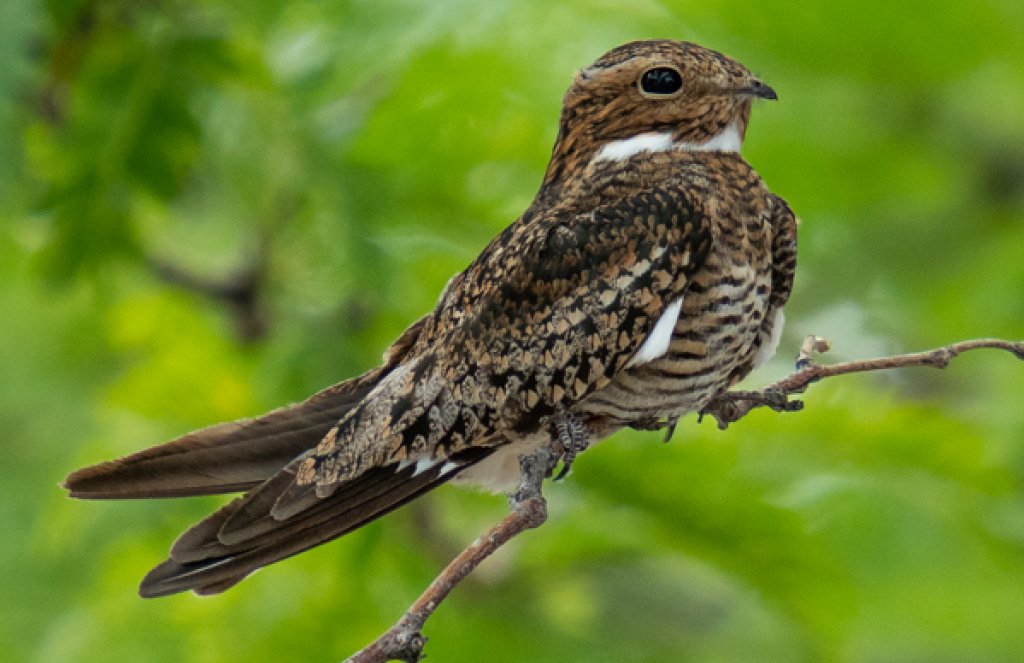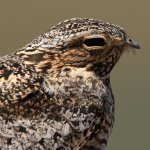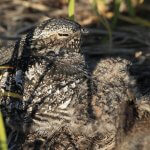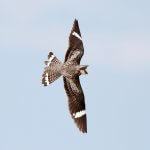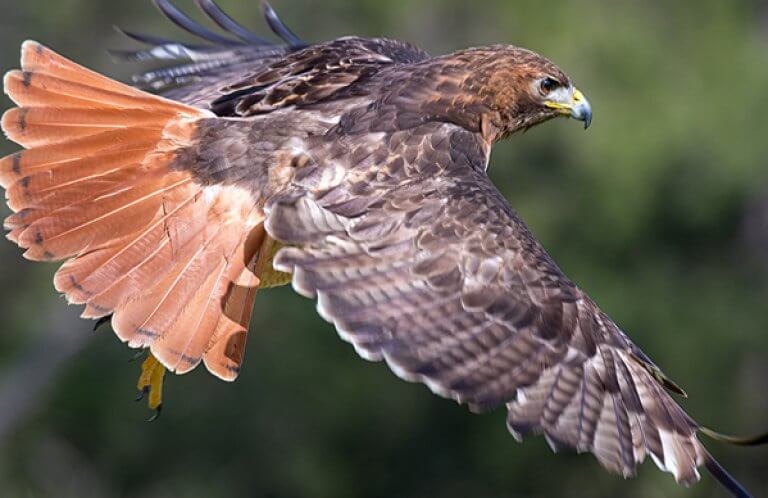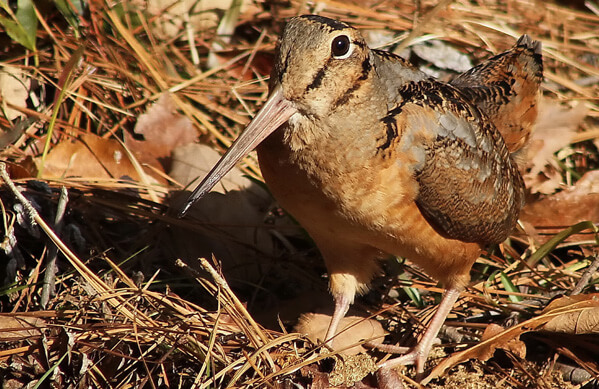About the Common Nighthawk
The Common Nighthawk's erratic, acrobatic flight style gives the bird its folk name “bullbat.” But the nighthawk is a bird, not a mammal. On long, pointed wings, this dusky hunter jerks and weaves through the air, flashing distinctive white wing patches. Unfortunately, in recent decades, the nighthawk has become a less familiar sight in many parts of town-and-country North America.
Nighthawks usually spend their days hidden, sometimes in plain view, thanks to their cryptic gray, brown, and blackish plumage and the birds' squat, “neckless” shape. They often prove difficult to spot even while roosting quietly on a tree branch or fence post.
The name “nighthawk” is misleading, since this bird is neither strictly nocturnal nor closely related to raptors like the Red-tailed Hawk or Peregrine Falcon.
Goatsucker
Like the Eastern Whip-poor-will and Chuck-will's-widow, the Common Nighthawk belongs to the family Caprimulgidae, a group also called nightjars or goatsuckers. Like many of its kin, the nighthawk is most often (though not always) out and about at dusk, dawn, and nighttime, when seeing this bird clearly can be a challenge.
One theory why these insect-eating birds are called goatsuckers: Pastoralists would see the birds buzzing livestock and guessed that they were nursing from the hooved mammals, when in actuality they were collecting flying invertebrate prey flushed by the herds.
Songs and Sounds
At night, the easiest way to detect the Common Nighthawk is to listen for its distinctive, buzzy “BEE-ert” call. A displaying male also produces a “booming” sound, caused by air rushing through its feathers, similar to the non-vocal sounds made by the American Woodcock and Wilson's Snipe.
Listen to a Common Nighthawk displaying here:
Breeding and Feeding
Booming Birds
This species lays its eggs directly on the ground, usually on sand, dirt, gravel, or bare rock. In cities, Common Nighthawks often nest on flat gravel roofs. Unfortunately, urban populations of crows increasingly target these city nighthawks, and eat their eggs.
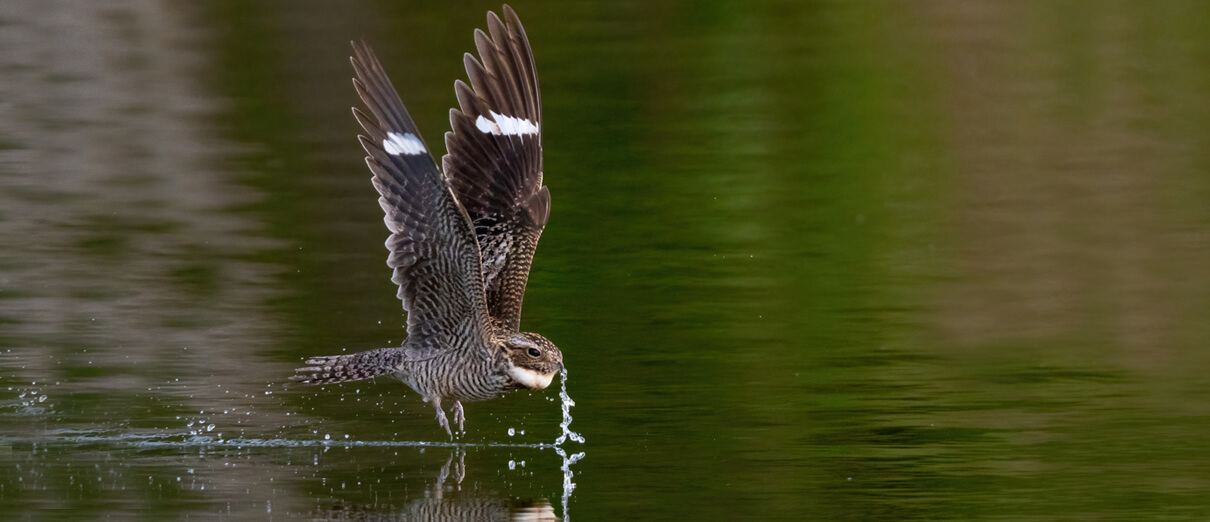
A male nighthawk courts a female by circling and hovering high in the air while calling repeatedly; then he plunges into a steep dive. The air passing through the bird's primary wing feathers creates a loud rushing or "booming" sound at the bottom of the dive. Male nighthawks also use this display to establish and protect territory.
The female Common Nighthawk performs all incubation duties, but will leave the nest to feed. Both parents care for young, feeding them regurgitated insects.
Aerial Insectivore
Common Nighthawks eat many kinds of flying insects, including mosquitoes, moths, beetles, and grasshoppers. Their wide, bristle-fringed mouths are adapted to scoop insects from the air, and long tails and long, pointed wings allow for acrobatic maneuvering in pursuit of prey. Nighthawks can most often be seen hunting on the wing at dawn and dusk, but they occasionally forage during the day, especially during overcast weather.
These nocturnal hunters take advantage of the clouds of insects attracted to streetlamps, stadium lights, and other bright lights, and often swoop around these artificial light sources. They also feed over fields and ponds.
Region and Range
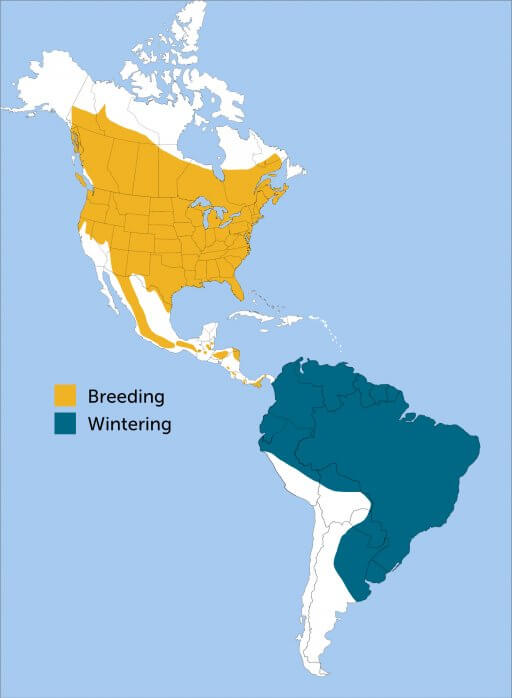
Common Nighthawks have one of the longest migration routes of all North American birds, and move early, beginning to travel south in August. The easiest way for many people to see this species is to watch the skies during this fall migration, when small to large flocks may pass overhead almost anywhere, usually close to dusk.
Until recently, this species' wintering grounds and particulars of its migration remained mysteries. However, advances in satellite tracking are beginning to paint a clearer picture: For example, a paper published in the journal Ecography in 2021 reported on data collected from 13 birds tagged on breeding grounds, then tracked to wintering grounds in Amazonian and cerrado habitats, mostly in Brazil. Migrating birds were found to concentrate along the Mississippi Flyway before taking a single path across the Gulf of Mexico, the Caribbean Sea, then on to South America. Pinpointing locations important to Common Nighthawk migration and wintering is key to planning for better conservation of this species.
Conservation of the Common Nighthawk
Fighting for Nighthawks
Threats to this interesting bird include pesticide use — leading to reduction in the insects the nighthawks forage on — and habitat loss. Common Nighthawks are also vulnerable to collisions with cars, since they forage over roads and sometimes roost on roadways at night.
Populations of the Common Nighthawk have plunged, with a cumulative decline of 58 percent between 1970 and 2014, according to the conservation coalition Partners in Flight. Once familiar neighborhood birds, nighthawks are now gone from many urban areas and rural towns where they once nested. Some regions, including the Northeast, have been particularly hard hit.
ABC and its Migratory Bird Joint Venture partners work to stem the nighthawk's and other bird species' declines through habitat conservation partnerships and also through the BirdScapes approach, which aims to conserve geographically linked habitats on breeding grounds, wintering grounds, and migration stopover sites.
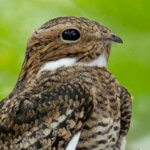
Help support ABC's conservation mission!
ABC also works to block or restrict dangerous pesticides that threaten the Common Nighthawk and other aerial insectivores, including the Purple Martin and Olive-sided Flycatcher.
In early 2016, we joined with beekeepers, farmers, and public interest groups in filing a lawsuit alleging insufficient federal regulation of neonicotinoids, insecticide compounds widely used as a seed coating. A 2013 study by ABC found that these “neonics” are toxic to birds and invertebrates, even in small quantities, and that they persist in soils for months and even years. Widespread neonics applications likely reduce the availability of invertebrate prey for nighthawks and other aerial insectivores.
Efforts continue: In February 2023, ABC and Public Employees for Environmental Responsibility (PEER) spearheaded a regulatory filing with the Environmental Protection Agency (EPA) on behalf of 65 nonprofit groups. The filing proposes major reforms in the way the agency regulates systemic insecticides, with particular focus on neonics.
Get Involved
Policies enacted by the U.S. Congress and federal agencies, such as the U.S. Fish and Wildlife Service, have a huge impact on migratory birds. You can help shape these rules for the better by urging lawmakers to prioritize birds, bird habitat, and bird-friendly measures. To get started, visit ABC's Action Center.
Living a bird-friendly life can have an immediate impact on migratory birds in the United States. Doing so can be as easy as adding native plants to your garden, avoiding pesticides, and keeping cats indoors. To learn more, visit our Bird-Friendly Life page.
American Bird Conservancy and our Migratory Bird Joint Venture partners have improved conservation management on more than 8.5 million acres of U.S. bird habitat — an area larger than the state of Maryland — over the last ten years. That's not all: With the help of international partners, we've established a network of more than 100 areas of priority bird habitat across the Americas, helping to ensure that birds' needs are met during all stages of their lifecycles. These are monumental undertakings, requiring the support of many, and you can help by making a gift today.





































